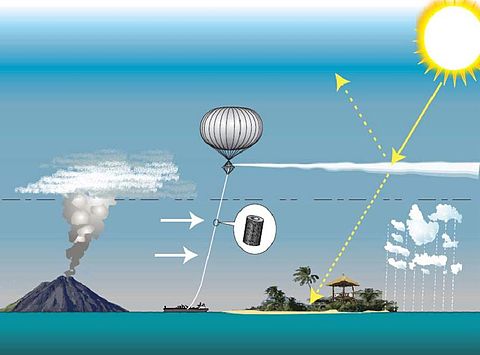Stratospheric Aerosol Injection (SAI) is one of the best-known of all cooling methods. It is, however, also one of the most opposed ones. It is often referred to as solar geoengineering.
The IPCC rejects SAI because it does not contribute to the goal of net-zero GHG emissions. This makes sense, because global warming is caused by Green House Gases (GHG), not by (increased) solar radiation.
We have added SAI to the CoolPlanet Toolbox because otherwise you, Dear Reader, might think we forgot it. But, like IPCC, we do not think that SAI is a good idea.
Quote from Wikipedia (Link 1)
Stratospheric aerosol injection is a proposed method of solar geoengineering (or solar radiation modification) to reduce human-induced global warming. This would introduce aerosols into the stratosphere to create a cooling effect via global dimming, which occurs naturally from volcanic eruptions.[1] It appears that stratospheric aerosol injection, at a moderate intensity, could counter most changes to temperature and precipitation, take effect rapidly, have low direct implementation costs, and be reversible in its direct climatic effects.[2] The Intergovernmental Panel on Climate Change concludes that it “is the most-researched [solar geoengineering] method, with high agreement that it could limit warming to below 1.5°C.”[3] However, like other solar geoengineering approaches, stratospheric aerosol injection would do so imperfectly and other effects are possible,[4] particularly if used in a suboptimal manner.[5]
Picture: Proposed tethered balloon to inject aerosols into the stratosphere.
Endquote
For documentation of the discussion regarding SAI compare:
After sun-dimming setback, geoengineers seek a diplomatic fix (trust.org)
